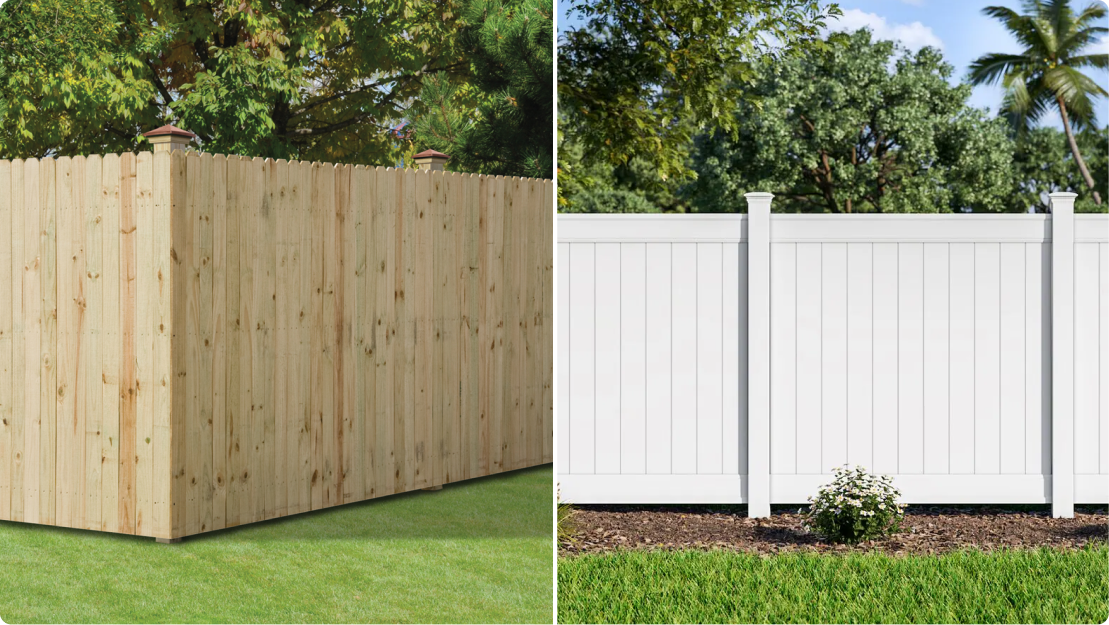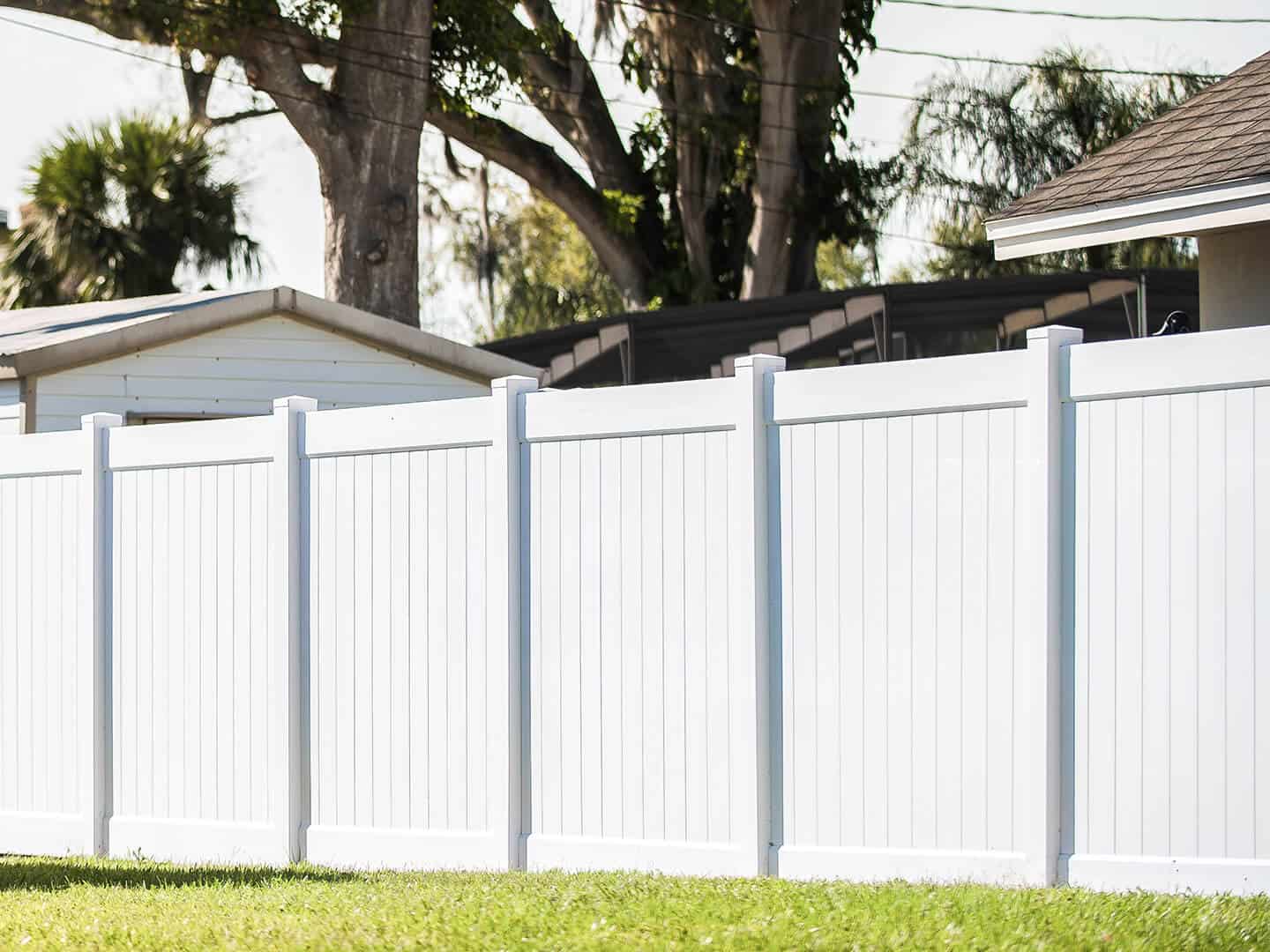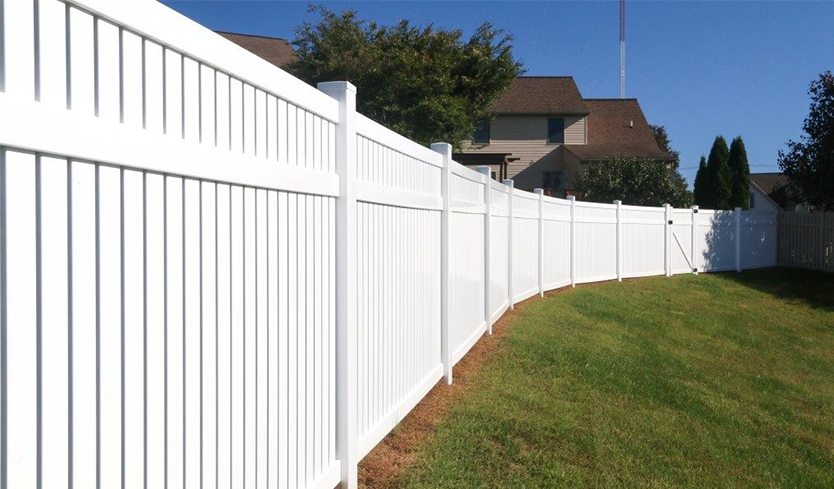Wood Fence vs. Vinyl: Which One Should You Choose?

When it comes to enhancing your property’s curb appeal and security, choosing the right fencing material is a big decision. Two of the most popular options homeowners consider are the wood fence and vinyl fence. Each has its own unique advantages, drawbacks, and style appeal, making the decision less about “which is better” and more about “which is better for you.” In this guide, we’ll compare these two materials based on appearance, durability, maintenance, cost, and environmental impact, so you can make the right choice for your home.
Appearance and Style
A wood fence offers a timeless, natural beauty that has been a favorite among homeowners for centuries. The warmth of natural wood can complement almost any architectural style, from traditional to modern. With countless stain and paint options, you can customize it to match your home’s exterior or create a unique design. Over time, wood develops a natural patina, which some homeowners love for its rustic charm.
Vinyl fencing, on the other hand, provides a sleek, polished look with clean lines. It comes in various colors and styles, including options that mimic the appearance of real wood. Unlike wood, vinyl retains its original look for many years without fading or peeling. For homeowners who want a uniform appearance with minimal upkeep, vinyl can be an attractive choice.
Durability and Lifespan
Durability is one of the most important factors when comparing a wood fence to a vinyl fence. Wood is strong and sturdy, but it’s vulnerable to moisture, insects, and weather damage. Without proper maintenance, wood can warp, rot, or crack over time. The lifespan of a wood fence typically ranges from 10 to 20 years, depending on the wood type and care level.
Vinyl fencing is highly resistant to rot, pests, and moisture. It doesn’t warp, crack, or splinter, making it ideal for areas with harsh weather conditions. A high-quality vinyl fence can last 20 to 30 years or more with little to no structural issues. However, vinyl can become brittle in extremely cold climates, and repairing damaged panels can be more expensive than replacing a wood board.
Maintenance Requirements
One of the biggest differences between a wood fence and vinyl fencing is the level of maintenance required. Wood needs regular upkeep, including sealing, staining, or painting every few years to protect it from the elements. Cleaning a wood fence may involve scrubbing, pressure washing, and reapplying protective finishes.
Vinyl fencing requires very little maintenance. Occasional cleaning with soap and water is usually enough to keep it looking new. You won’t need to worry about painting, staining, or sealing. This low-maintenance feature is one of the main reasons homeowners choose vinyl over wood.
Cost Considerations
Cost plays a significant role in choosing between a wood fence and a vinyl fence. Initially, wood fencing is generally more affordable, especially if you opt for common types like pine or spruce. However, premium wood types such as cedar or redwood can cost more upfront. While the initial investment may be lower, ongoing maintenance costs can add up over the years.
Vinyl fencing has a higher upfront cost compared to most wood fences. However, because vinyl requires almost no maintenance, the long-term expenses are minimal. Over a 20-year period, vinyl can be more cost-effective than wood when you factor in repair and upkeep costs.
Environmental Impact
If sustainability is important to you, the wood fence may be the better choice. Wood is a renewable resource, and if sourced responsibly, it has a lower environmental footprint. Additionally, old wood fences can be repurposed or recycled in many cases.
Vinyl fencing is made from PVC, a type of plastic that’s not biodegradable. While it’s long-lasting, its production process has a higher environmental impact compared to wood. Some manufacturers are now producing vinyl fencing from recycled materials, which helps reduce its footprint, but it’s still less eco-friendly than sustainably sourced wood.
Which Should You Choose?
Choosing between a wood fence and a vinyl fence comes down to your priorities:
- Choose Wood if you value natural beauty, customizability, and a traditional look, and you don’t mind regular maintenance.
- Choose Vinyl if you prefer long-lasting durability, minimal upkeep, and a modern, clean appearance.
If budget and sustainability are your top concerns, a wood fence might be the better fit. But if you want a “set it and forget it” option that looks good for decades, vinyl is hard to beat.
Ultimately, the best fence for you depends on your lifestyle, climate, and personal preferences. By weighing the pros and cons of each material, you can invest in a fence that enhances your property for years to come.




